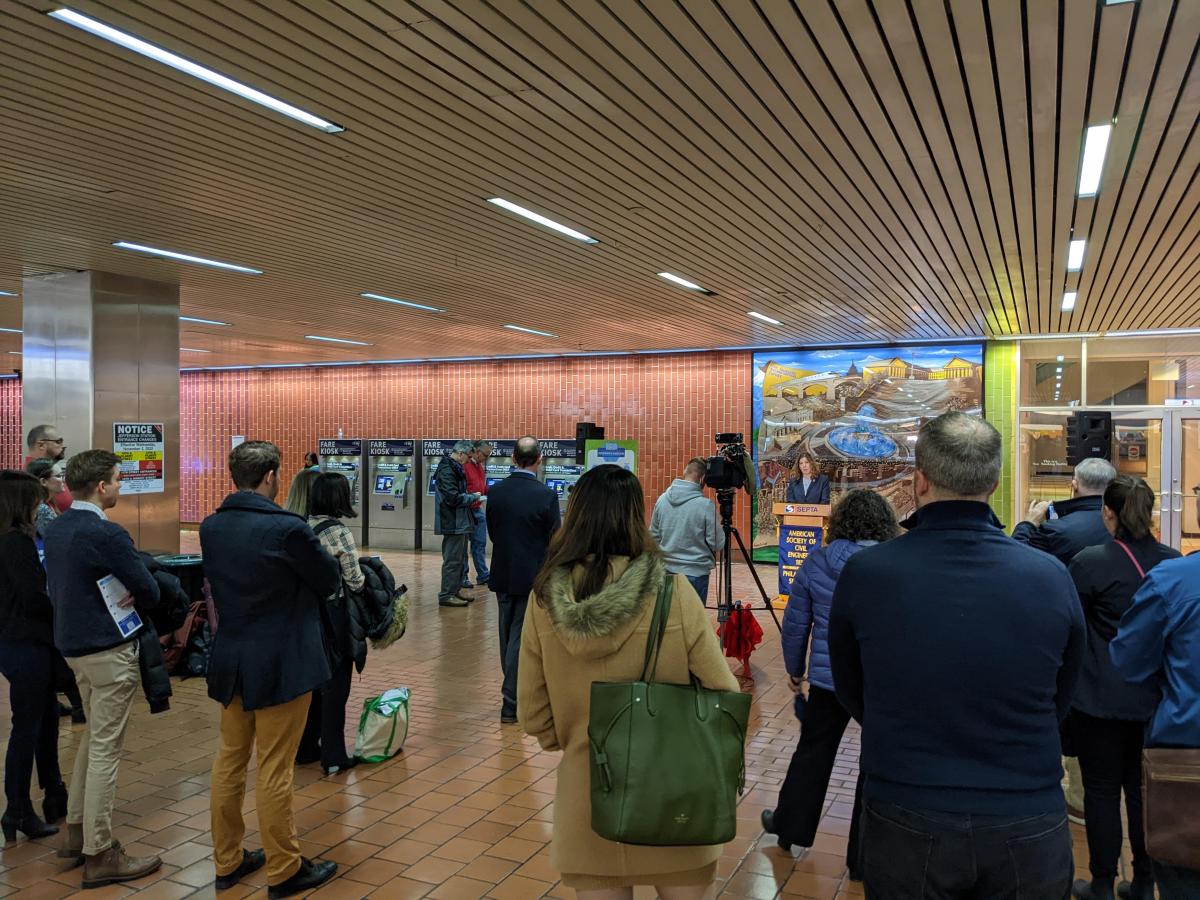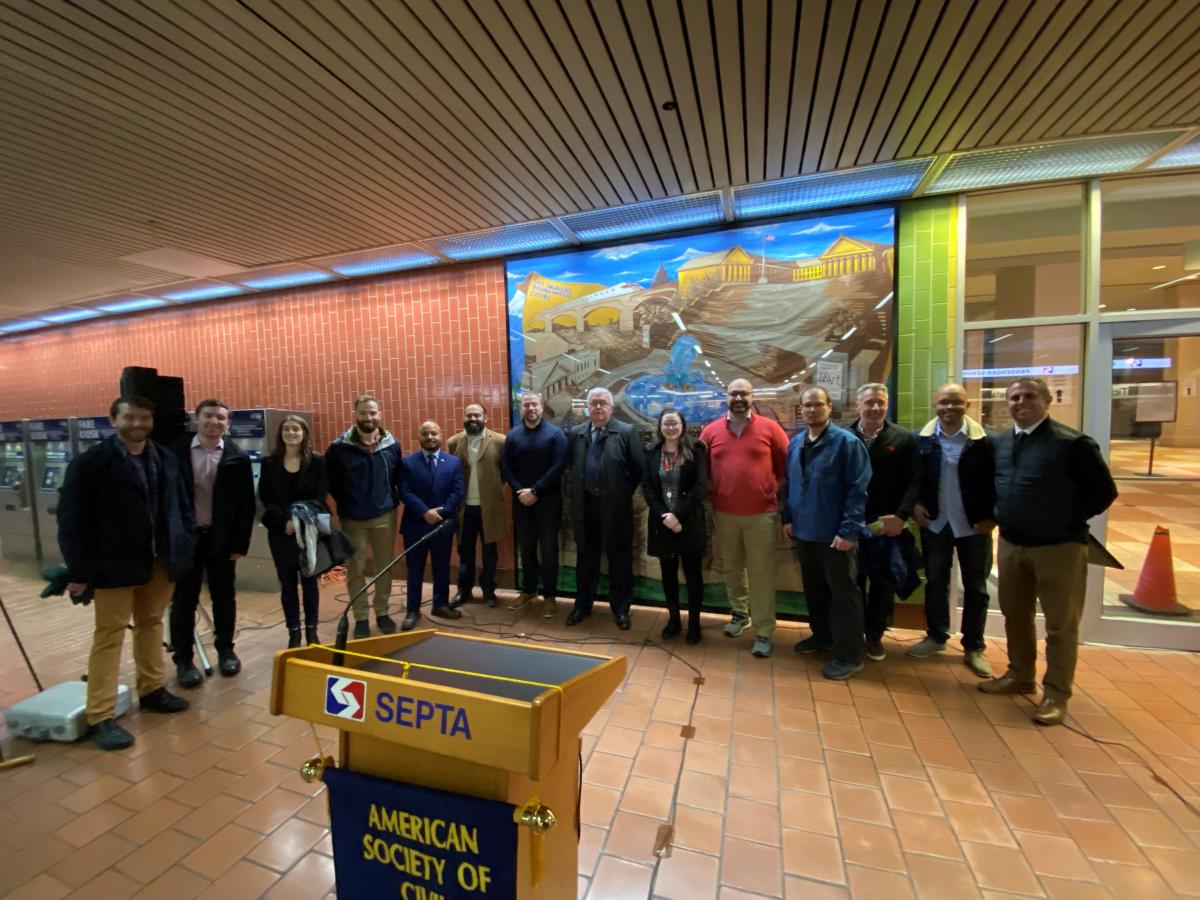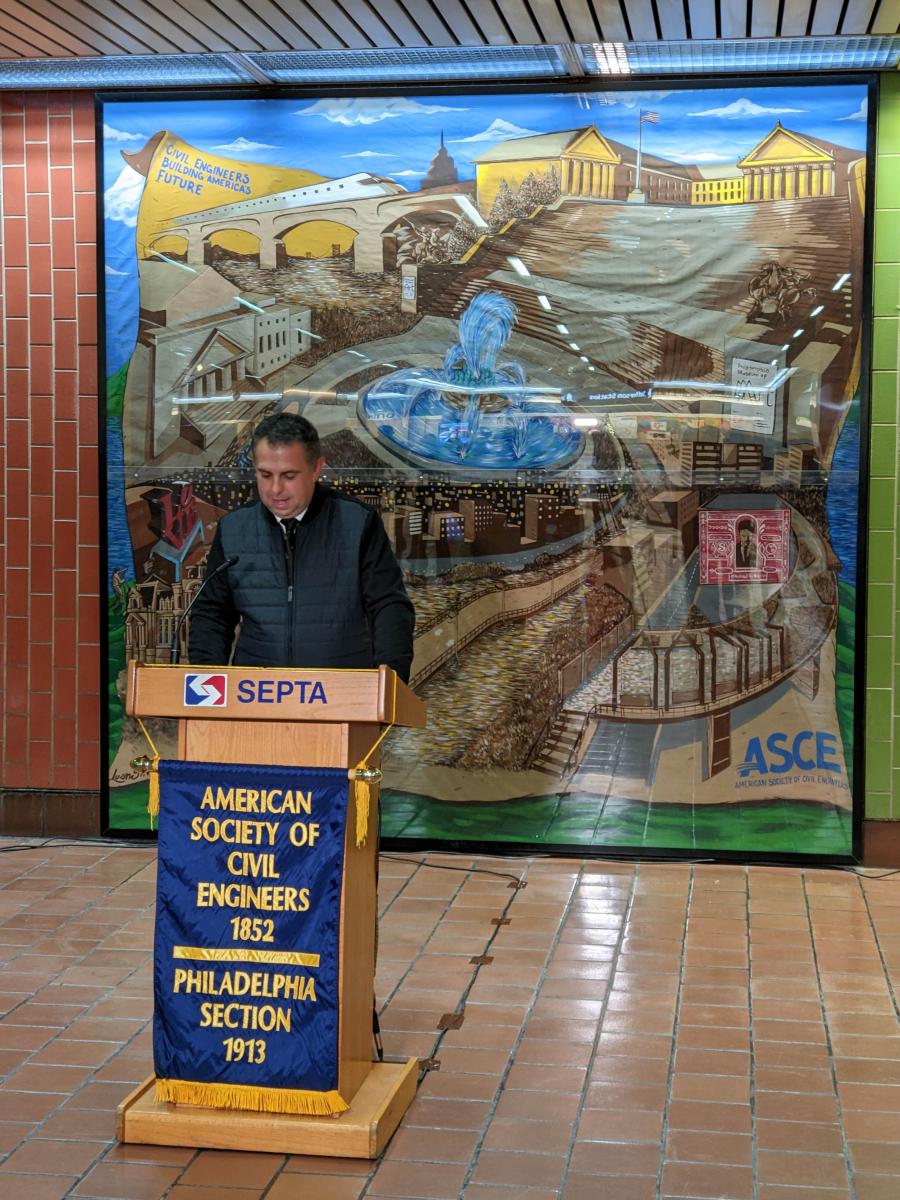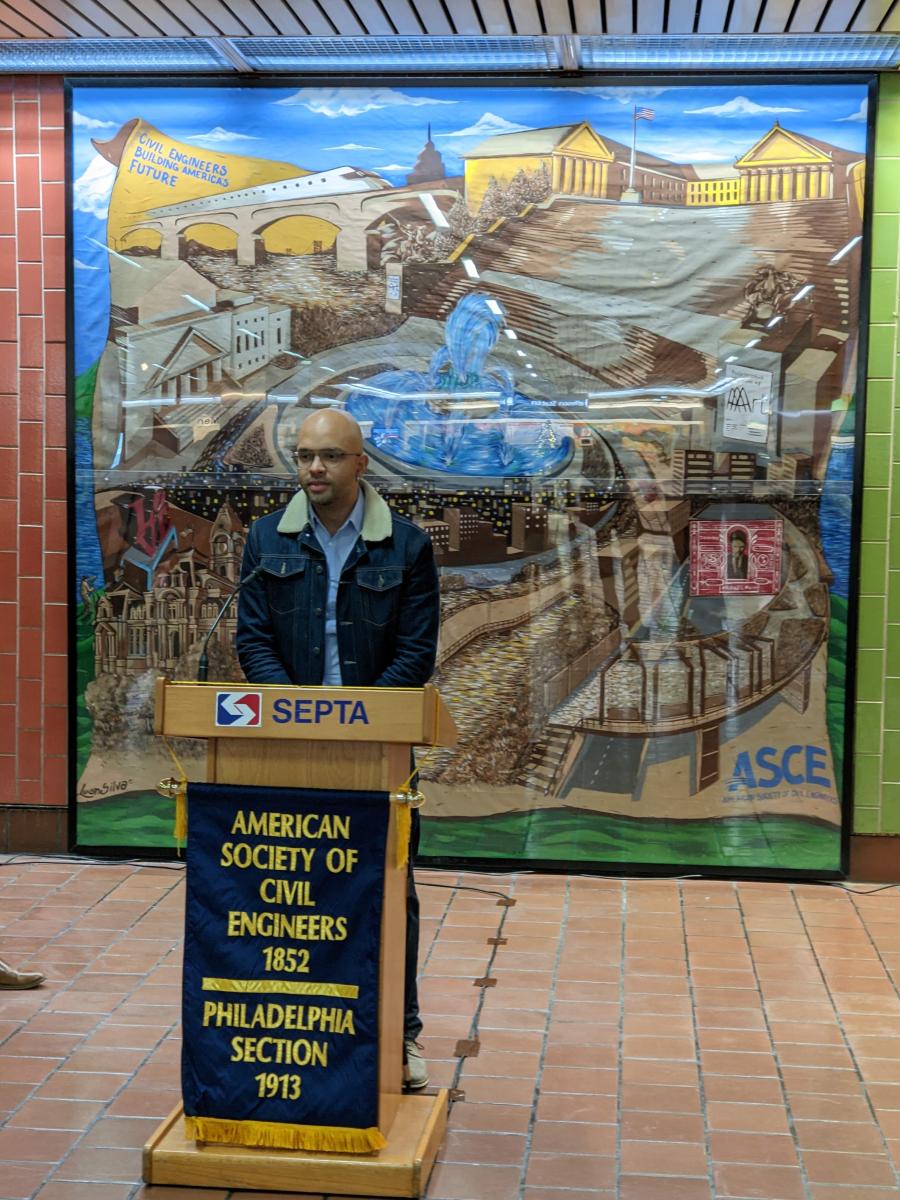 Background
Background
The Philadelphia Section originally considered the commissioning of a mural to pictorially commemorate civil engineering achievements in the Philadelphia area in 1997. A Mural Committee was established by the Section’s Board of Directors and discussions were begun with the Mural Arts Office of the City of Philadelphia Department of Recreation. Funding was budgeted using both Section resources and special project grants available from ASCE National.
Selection of the proper site became the first challenge. The usual place for such a mural would be on a blank building side wall or bridge abutment. The Section had desired to find a very visible location in Center City. The Mural Arts Office began an exhaustive search process which continued to turn up sites which could not be utilized for a variety of reasons. In the meantime, the artists from the Mural Arts Office were developing the concept of the mural, which would show a plan of Center City with certain buildings and bridges rising from the plan sheet in a three-dimensional motif.
Working with the Pennsylvania Department of Transportation, the Mural Arts Office and the Section were able to find a workable spot along the Schuylkill Expressway (I-76) at the Spring Garden Street exit. The Mural Arts Office had placed a mural just “upstream” from that location, at Girard Avenue, in 1992-93, which commemorated the nearby Philadelphia Zoo. Arrangements were made and the mural was a “go”. A rendering of the proposed mural was produced and reviewed by the Mural Committee in the summer of 1998.
Actual placement alongside busy Expressway traffic would present a challenge, since artists’ scaffolds would need to be positioned in the Expressway shoulder in a potentially vulnerable area. The Mural Arts Office suggested the use of an innovative method, the painting of the mural on a series of 30 4-foot by 8-foot plywood panels offsite and attachment of panels to a frame on the desired wall, to avert the difficulty of scaffolding at the site. The assembled panels measured 20 feet in height and 48 feet in length in place. The mounting frame was designed by Section members and coordinated by the City of Philadelphia Department of Streets and Tantala Associates.
After final edits to the original rendering, the mural itself began to take shape in the summer of 1999. Buckley and Company, a local contracting firm, volunteered the use of its forces, equipment and facilities to prepare the panels, transport them to the site, and erect the finished product on its frame at the site. PaDOT agreed to a lane closure on the Expressway on a Saturday morning to permit the erection of the panels. The completed mural was placed on September 25, 1999.
On October 6, 1999, the mural was officially dedicated by the Section at a ceremony conducted at the Fairmount Water Works (a National Civil Engineering Landmark), across the Schuylkill River from the mural site.
The following groups and firms were instrumental with their assistance in the realization of the mural:
- City of Philadelphia, Department of Recreation, Mural Arts Program – Jane Golden, Director; Jonathan Cohen, Mural Artist
- Buckley and Company – Transport and Placement
- City of Philadelphia, Department of Streets and Tantala Associates – Frame Design
- Pennsylvania Department of Transportation, District 6 – Site Approval, Traffic Coordination
- DMJM + HARRIS – Dedication Ceremony (currently AECOM)
In 2004, a truck pulled off I-76 onto the shoulder and struck the mural, resulting in damage that, after some evaluation and assessment, was determined to be irreparable. The panels of the mural were removed for safety and stored, in the hopes that those panels that were able to be salvaged could be remounted and the damaged panels replaced. A suitable site was not able to be found.
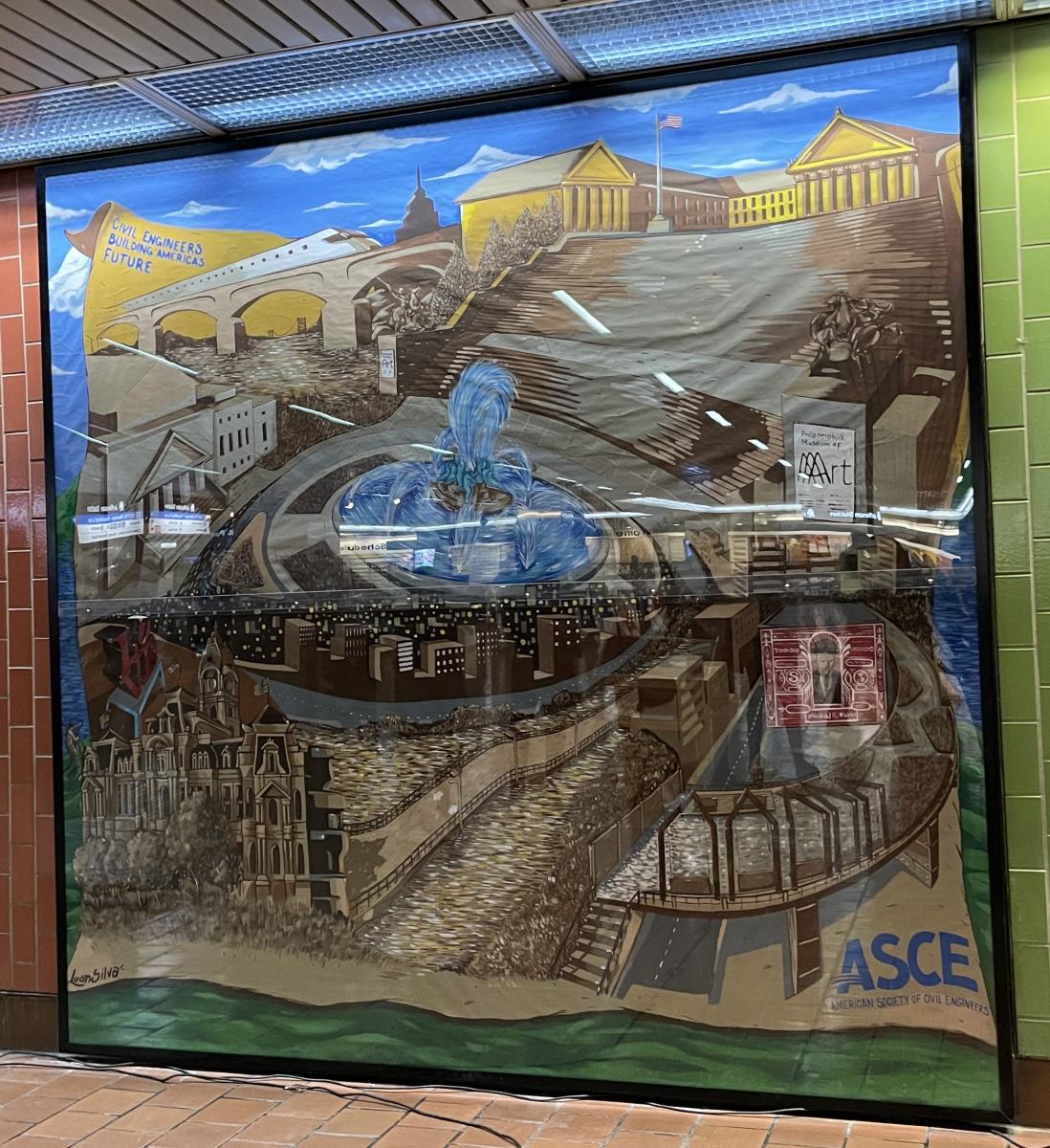
After this experience, the Section reconsidered the mural especially in a vulnerable location, and it was found that in the selected location it was not easily viewed or seen. Thus, in 2018, it was proposed to start over with a new mural and look to locations that would be more accessible and less prone to damage. Following some discussions with the Southeastern Pennsylvania Transportation Authority (SEPTA) on the possible installation of a mural on the glass panels of several subway entrance headhouses in Center City that would be highly visible, and option was brought forward to place this in the mezzanine area of Jefferson (formerly Market East) Station on SEPTA’s Regional Rail network. This Station is part of the Center City Commuter Rail Connection, itself cited as the Outstanding Civil Engineering Achievement for 1985, and would be an ideal place for up-close viewing by passers-by headed to and from trains. This would additionally provide an indoor and protected area for the mural. SEPTA staff was instrumental in providing the space and accordingly the Section commissioned artist Luan Silva to create “Version 2.0” of the mural.
Discussions and meetings were conducted to work out the logistics and find the best location for this within the Station, with the west end mezzanine selected for this. Coordination with planned ticket machines to be installed in this area as part of SEPTA’s Key Card fare payment system was completed, along with attending to details, which were somewhat delayed with the pandemic, resulted in the mounting and installation of the mural at this location. The mural was installed on December 5, 2022, literally hours before the planned dedication.
SEPTA General Manager Leslie Richards was on hand at the December 6 event to offer some remarks on the Mural as well as the Report Card and how SEPTA is committed to improve the transit network and system in the region. At the event, Section President Moe Elghawy opened the festivities, handing off to Past President Bob Wright who went through the information in the Report Card, General Manager Richards for her remarks, and Past President Angelo Waters for his background on the mural itself.
Thanks very much to the Mural Committee, led by Past President Angelo Waters, for its diligence and assistance in making this happen, as well as to SEPTA for its help and providing the space where it continues to be seen by many.
Original Mural Installation
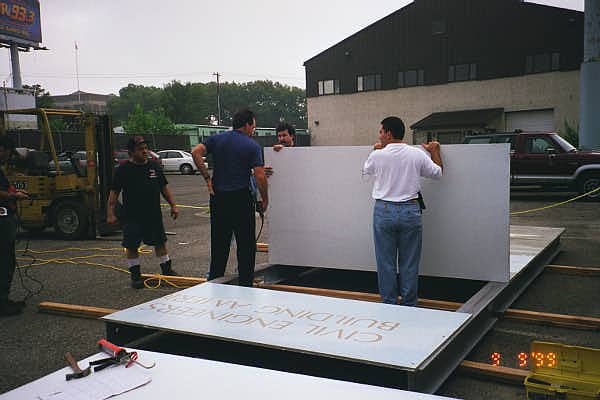
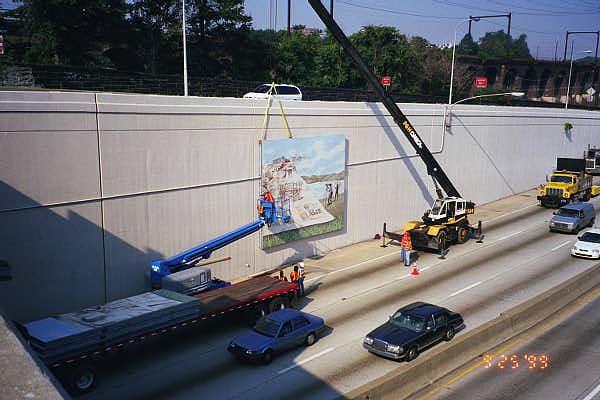
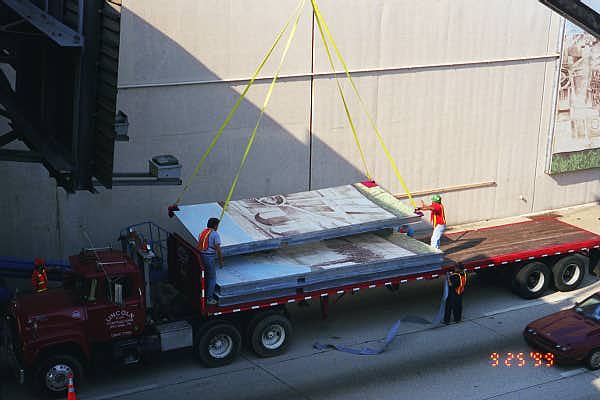
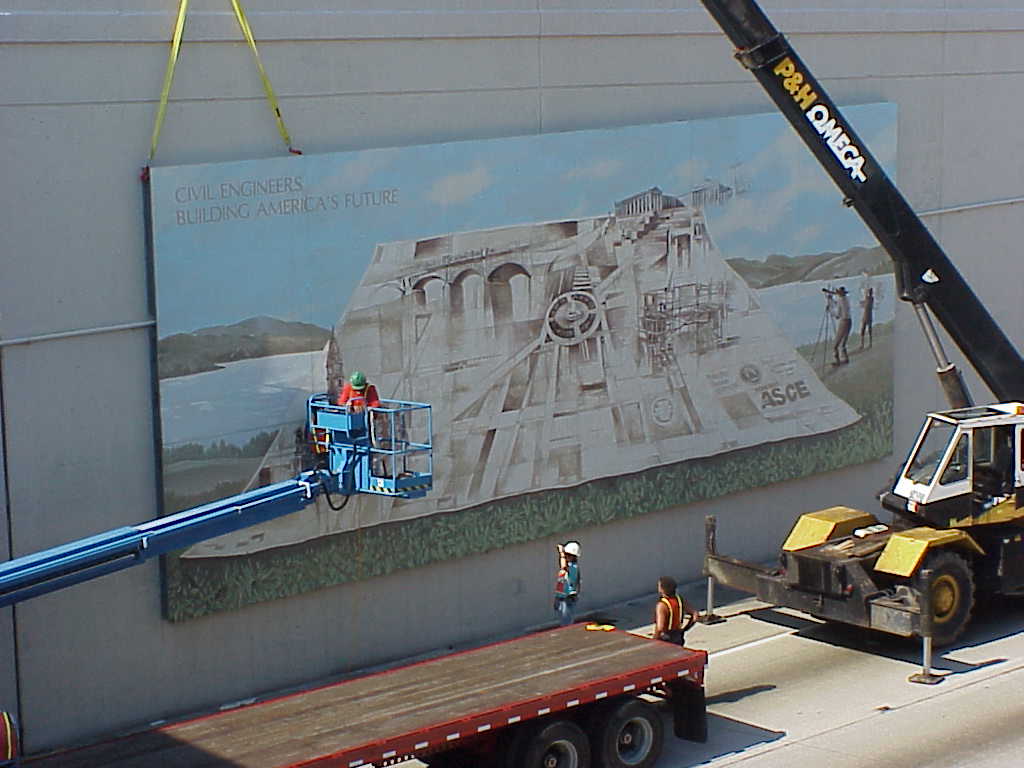
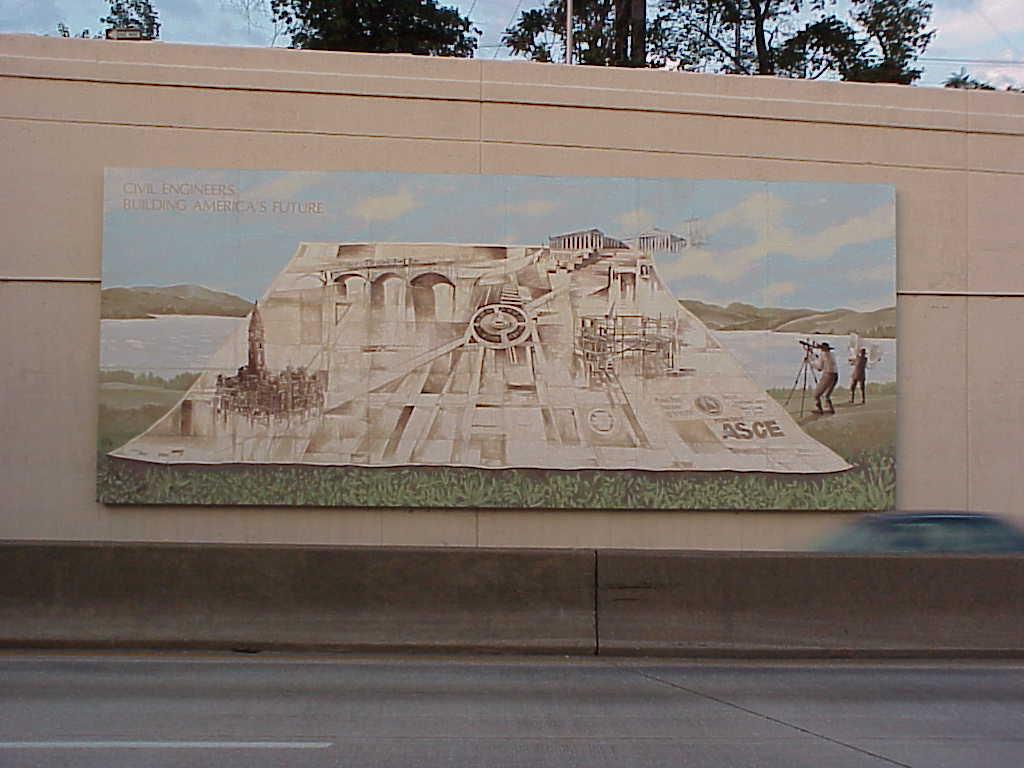
New Mural Dedication
